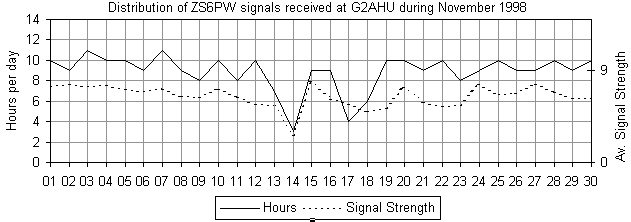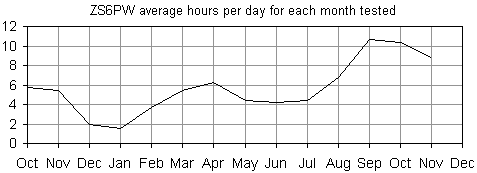Ray writes "The graph showing the [daily] reliability of ZS6PW shows that F-layer propagation held up remarkably well during November. There were some ionospheric disturbances in the middle of the month, and still reliability above 90% was obtained from 0900-1500 daily, with 100% at 1400 and 1500z. Propagation remained good for QSOs to Australia, North and South America as well as Africa but the band often remained remarkably short of normal amateur activity."

The graph below on the left shows average hourly reliability and signal strength of ZS6PW. The right side graph compares the measured reliability with the predicted reliability for Harare as published in Rad Com [Radio Communication, the monthly periodical of the Radio Society of Great Britain]. The RadCom figures are represented as ranges in intervals of 10% - it is the upper boundary of the predicted ranged that is plotted on the graph. Ray notes that "the RSGB predictions again seem a long way out after being very good during the equinoctial period. They underestimate from mid-morning to early evening and over-estimate in the early morning and late evening. At this time of year, early morning and evening results are determined by the last hop into Britain."

"The graph showing the average hours per day for each month since auto recording was set up on the ZS6PW beacon, illustrates the seasonal variations as well as the improvement as the solar cycle progresses towards the maximum forecasted for 2000. The seasonal maxima at the equinoxes and the minima at the solstices are also clearly illustrated".
